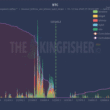IBM has unveiled plans for its Quantum Starling system—a pioneering fault-tolerant quantum computer—which experts say could significantly reduce the timeline for when quantum machines might challenge Bitcoin’s cryptographic security. The anticipated debut by 2029 marks a major milestone on the path to scalable, practical quantum computing.
Quantum Computing Inches Closer to Blockchain Disruption
For years, quantum computers have been seen as a distant threat to digital security protocols like those safeguarding Bitcoin. However, with the announcement of IBM Quantum Starling, the risk may arrive sooner than anticipated. Unlike traditional quantum systems hampered by high error rates, the Starling platform is designed to operate with full fault tolerance, a breakthrough that unlocks the ability to execute highly complex algorithms. With the capability to run 100 million quantum operations using 200 error-corrected qubits, Starling represents a leap forward in the pursuit of quantum computers capable of factoring the cryptography that underpins modern blockchains.
Revolutionizing Fault Tolerance with Advanced Error Correction
At the core of Starling’s design is an emphasis on minimizing errors that plague quantum computation. IBM’s approach incorporates cutting-edge Bivariate Bicycle codes—advanced quantum low-density parity-check (LDPC) codes—that reduce the physical qubit requirement by up to 90% compared to older methods. Further innovation arrives with real-time error correction decoders, implemented via FPGAs or ASICs, intentionally designed to neutralize errors before they escalate. “A huge effort is devoted to quantum error correction and mitigation,” explained Rosa Di Felice, Technical Director at USC’s IBM Quantum Innovation Center, emphasizing the processor’s potential to streamline quantum calculations for research and industry alike, including material science and pharmaceutical breakthroughs.
IBM’s Ambitious Quantum Roadmap: Starling and Beyond
IBM’s quantum roadmap lays out significant advances through 2029 and beyond. In 2025, the company plans to launch the 120-qubit Nighthawk processor with deeper circuit capabilities, enhance its Qiskit software suite, and introduce modular fault-tolerant architectures. By 2026, IBM aims to demonstrate the first instances of quantum advantage, while rolling out its Kookaburra modular processor, designed to integrate quantum memory and logic for scalable systems. By 2027, the firm anticipates scaling to 1,080 qubits and entangling multiple modules with its Cockatoo processor. The Starling prototype is slated for 2028, with full deployment expected the following year at IBM’s Poughkeepsie, New York, quantum center.
Key Stats & Figures
- Quantum Operations: Starling will execute 100 million quantum operations using 200 error-corrected qubits.
- Error Correction Efficiency: Innovative LDPC codes could reduce physical qubit requirements by up to 90%.
- Roadmap Milestones: IBM projects system scalability to 1,080 qubits by 2027 and full Starling deployment by 2029.
- Processing Power: Real-time error correction implemented via FPGAs or ASICs enables on-the-fly error mitigation.
Evaluating the Real Threat to Cryptocurrency
While IBM’s progress has set the crypto community abuzz, opinions are divided on how imminent the quantum threat truly is. MicroStrategy’s Michael Saylor recently remarked that quantum computers are likely to compromise banking and major tech platforms long before Bitcoin succumbs. Academic voices, including Professor David Bader of NJIT, stress that although fault-tolerant quantum computers could eventually undermine current cryptographic algorithms, practical attacks remain several years—or even decades—away. Bader emphasizes that blockchain developers should begin shifting toward quantum-resistant encryption, though he reassures that “blockchains won’t suddenly break in 2029—but it’s worth watching.”
Conclusion: What This Means for the Market
IBM’s pursuit of fault-tolerant quantum computing is a reminder for the crypto industry to future-proof its security as the quantum era approaches. While current cryptographic systems remain safe for now, the accelerating quantum roadmap signals a need for proactive adoption of quantum-resistant algorithms across blockchain protocols. As 2029 draws closer, all eyes will be on how quickly the industry adapts—and how soon quantum computing becomes a true game-changer for digital assets.
